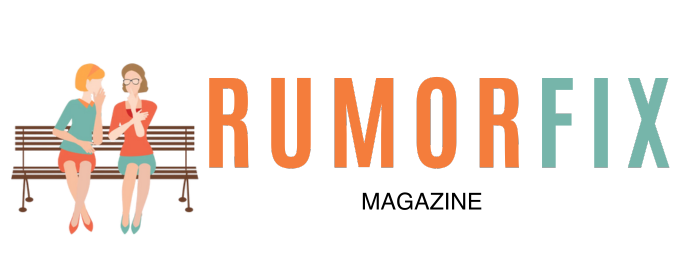
In every boardroom, decisions carry weight far beyond numbers and reports. They shape an organization’s direction, influence its reputation, and impact every person connected to it. When the right mix of people sits around that table, great things happen.
But when something feels off, it’s rarely because the directors lack experience or intellect. It’s usually because the chemistry isn’t there. That’s where cultural fit comes in – the subtle but powerful glue that holds an effective board together.
Cultural fit isn’t about hiring people who think the same way or share the same background. It’s about ensuring that every board member aligns with the organization’s purpose, values, and long-term vision while still bringing a diversity of thought.
Finding that balance is one of the toughest and most essential parts of board recruitment today.
Why Cultural Fit Matters More Than Ever

Boards used to be selected mainly for technical expertise – finance, law, operations, or governance. Those skills are still vital, but they no longer guarantee harmony or strategic unity.
Modern boards operate in environments shaped by global volatility, technology disruptions, and public accountability. If members don’t connect on a deeper level – how they handle conflict, approach change, or treat people – the board’s effectiveness weakens.
Advisory firms such as Ned Capital have highlighted how shared purpose among board members can drastically improve cohesion during periods of uncertainty.
A Common Purpose Drives Better Decision-Making
When directors share a sense of mission, conversations flow more easily. They can debate ideas without making it personal. Cultural fit ensures that even in disagreement, there’s mutual respect and trust.
That allows the board to act quickly when the company faces uncertainty, rather than getting bogged down in ego battles.
In simple terms: when everyone around the table believes in the same cause, decisions are sharper, faster, and more grounded in the company’s real identity.
Reputation and Public Trust Depend on It

Investors, regulators, and employees pay close attention to how boards behave. If members appear divided or out of sync with the company’s values, confidence erodes.
Cultural misalignment can lead to public missteps – tone-deaf statements, inconsistent policies, or slow responses to social issues.
A board’s culture often mirrors the organization’s internal climate. When the board demonstrates integrity and shared purpose, it reinforces the company’s credibility across all levels.
What Cultural Fit Actually Means in a Board Context
Cultural fit in board recruitment isn’t about comfort zones or personality matches. It’s about alignment with how the organization leads, communicates, and holds itself accountable. To evaluate fit properly, boards must look at three main layers:
| Layer | What It Involves | Why It Matters |
| Values Alignment | How a candidate’s principles align with the company’s ethical and social commitments | Prevents conflicts over integrity and long-term strategy |
| Behavioral Compatibility | How a director engages in discussions, handles feedback, and collaborates | Encourages constructive debate and balanced power dynamics |
| Leadership Philosophy | How a person views decision-making, risk, and accountability | Ensures cohesion in governance style and tone from the top |
A strong cultural fit allows the board to function as one voice, even when perspectives differ. Without it, technical skills can be overshadowed by personality clashes and miscommunication.
The Hidden Cost of Getting It Wrong
Cultural mismatches at the board level don’t always cause visible chaos right away. The signs are subtle at first: meetings run longer, decisions drag, or certain members stop contributing altogether. Over time, the ripple effects grow.
Slow Decision-Making
If directors don’t share the same values or communication style, discussions become cautious and defensive. A divided board hesitates to act, fearing internal backlash. In fast-moving industries, that hesitation can cost opportunities.
Leadership Turnover

When board culture feels fractured, top executives sense it quickly. CEOs who don’t feel supported by a unified board often move on, and senior teams follow. Replacing leadership repeatedly drains morale and market confidence.
Damaged Reputation
Investors and employees can sense when a board is out of sync. In some cases, conflicts spill into the public sphere – through leaked disputes, abrupt resignations, or contradictory statements. Once trust erodes, rebuilding it is slow and costly.
Assessing Cultural Fit During Recruitment

Evaluating cultural fit in board recruitment isn’t about informal impressions or personal chemistry over dinner. It requires structured assessment and careful questioning. The process must balance objectivity with intuition.
Step 1: Define the Board’s Current and Desired Culture
Before interviewing candidates, the board itself must agree on what kind of culture it wants. That means defining:
- How the board interacts (formal vs. collaborative)
- How it approaches conflict and decision-making
- What its priorities are – growth, stability, innovation, or impact
- Which values guide every discussion
Without this clarity, even the most qualified candidate may not know what they’re stepping into.
Step 2: Look Beyond Résumés
Resumes show what someone has done, not how they operate. Cultural alignment becomes clearer through behavioral and situational interviews. Boards can ask questions like:
- How do you handle disagreement in a board setting?
- Describe a time when you supported a decision you personally disagreed with.
- How do you balance governance oversight with management trust?
The answers reveal much about humility, listening skills, and collaboration – qualities that often separate good boards from great ones.
Step 3: Use Peer Interviews and Observations
Some organizations invite shortlisted candidates to sit in on mock sessions or meet current members informally.
Observing how they contribute, listen, or challenge ideas gives deeper insight into whether they’ll fit the board’s rhythm.
When Diversity and Cultural Fit Work Together

Cultural fit should never mean hiring clones. In fact, true fit thrives in diversity – diversity of thought, experience, and background, united by shared respect and purpose. The goal is to build a board that feels cohesive without being uniform.
Encouraging Constructive Tension
A healthy board culture includes room for disagreement. The key is how that disagreement unfolds.
Directors who fit culturally can challenge each other productively without losing focus or respect. That’s the sweet spot: tension that leads to better outcomes.
Broadening the Definition of Fit
Companies are rethinking what “fit” really means. It’s not about blending in but adding value in ways that complement others.
A first-generation entrepreneur, a sustainability expert, or a tech innovator might not fit the traditional board profile but could align deeply with the company’s evolving mission.
Tools for Measuring Cultural Fit Objectively
Subjectivity can be dangerous in board recruitment. Some organizations now use structured tools to measure cultural alignment with more rigor.
Surveys and Psychometric Tools
Boards use anonymous surveys to define their collective values and decision-making styles. Tools like the Hogan Board Report or BoardEx assessments can compare candidate traits with the existing team’s behavioral patterns, highlighting areas of potential friction or synergy.
Cultural Mapping
A “culture map” plots how board members typically behave in key areas such as communication, hierarchy, trust-building, and conflict resolution.
Candidates can then be assessed against this map to predict compatibility before appointment.
| Cultural Trait | Low Alignment Impact | High Alignment Impact |
| Communication Style | Misunderstandings and slower collaboration | Clear, open, respectful exchange |
| Risk Appetite | Overly cautious or reckless decisions | Balanced and deliberate judgment |
| Leadership Tone | Disconnection between board and management | Unified leadership direction |
Such frameworks make cultural evaluation tangible, reducing bias and improving transparency.
Examples of Cultural Fit in Practice
Real-world cases show how cultural alignment can make or break board effectiveness.
Case 1: The Turnaround at a European Energy Firm
A mid-sized energy company brought in several directors with strong technical backgrounds but little alignment with the company’s collaborative culture. Meetings became combative, and strategy sessions stalled.
The chair later restructured the board to include directors who valued consensus-building. Within a year, decisions moved faster, employee satisfaction improved, and the company regained investor confidence.
Case 2: A Tech Start-up’s Board Expansion
A rapidly growing tech firm added two independent directors known for scaling digital ventures. They shared the company’s culture of experimentation and transparency.
Their presence helped the board balance governance with innovation, creating structure without stifling creativity. The result was a smoother transition from start-up to scale-up, both in leadership style and market execution.
The Chair’s Role in Maintaining Cultural Balance

Once the right mix is in place, maintaining cultural fit becomes an ongoing responsibility – especially for the chair. The chair sets the tone for communication, ensures that quieter voices are heard, and manages tension before it turns toxic.
Setting Expectations Early
Every director should receive a clear orientation not just about governance rules, but about how the board collaborates. Simple guidelines on meeting etiquette, feedback styles, and conflict resolution go a long way toward maintaining trust.
Continuous Evaluation
Annual board reviews should include cultural assessment. Some organizations include questions like:
- Do members feel safe to speak openly?
- Are discussions balanced between oversight and strategy?
- Is decision-making inclusive and efficient?
Cultural fit isn’t static. As the organization evolves, the board’s culture must adapt too.
Balancing Cultural Fit and Fresh Perspective
Sometimes, a perfect cultural fit can become a trap if it means avoiding challenge. Boards must protect against groupthink by actively seeking members who align with the company’s values but bring new viewpoints. The right fit is not about uniformity; it’s about harmony with productive friction.
To strike that balance:
- Rotate committee assignments to encourage diverse interactions
- Bring in external advisors periodically for independent viewpoints
- Encourage open reflection sessions after major decisions
Boards that stay curious and flexible maintain a healthy culture without falling into comfort zones.
Red Flags to Watch for in Board Recruitment

Recruiting for cultural fit doesn’t always go smoothly. There are warning signs that the process may be leaning too heavily on familiarity or intuition.
| Red Flag | Why It’s Risky | Better Approach |
| “We just clicked instantly” | May reflect personal bias rather than true alignment | Evaluate behavior and values through structured interviews |
| “They’ll fit right in because they’re like us” | Reinforces homogeneity and suppresses innovation | Focus on shared purpose, not personality |
| “We can teach them our way later” | Culture rarely changes post-appointment | Prioritize alignment before onboarding |
Recognizing these pitfalls helps maintain fairness and objectivity in the selection process.
How to Build a Culture-Conscious Recruitment Strategy

A structured approach ensures that cultural fit becomes a measurable, repeatable part of board recruitment rather than a vague intuition.
1. Conduct a Culture Audit
Start by documenting how the board operates. Interview directors, executives, and key stakeholders to capture perceptions about tone, collaboration, and values.
2. Create a Cultural Competency Framework
Translate cultural qualities into measurable behaviors. For example:
| Core Value | Observable Behavior |
| Transparency | Open discussion of dissenting views |
| Accountability | Admitting mistakes and learning from them |
| Inclusivity | Encouraging input from all members |
This framework can then guide interviews and candidate evaluations.
3. Align the Nomination Committee
Ensure the nomination or governance committee shares a clear definition of cultural fit. They should agree on how to measure it, what traits to prioritize, and how to balance it with technical expertise.
4. Include Culture in Onboarding and Reviews
Introduce new directors to the board’s culture during onboarding, not just its bylaws. Follow up during evaluations to confirm that cultural values remain visible in behavior and decision-making.
Final Thoughts
Boards often focus heavily on financial metrics, strategy, and compliance. Yet, the factor that determines whether they actually perform well together often comes down to something less visible – culture. When recruitment prioritizes alignment of values, communication styles, and leadership philosophies, the result is a board that not only governs effectively but leads with integrity and cohesion.
Cultural fit isn’t a checkbox or a soft concept. It’s the difference between a group of capable individuals and a high-functioning, resilient team that steers an organization with shared conviction. The best boards know that who you bring in matters just as much as what they know – and they recruit accordingly.













